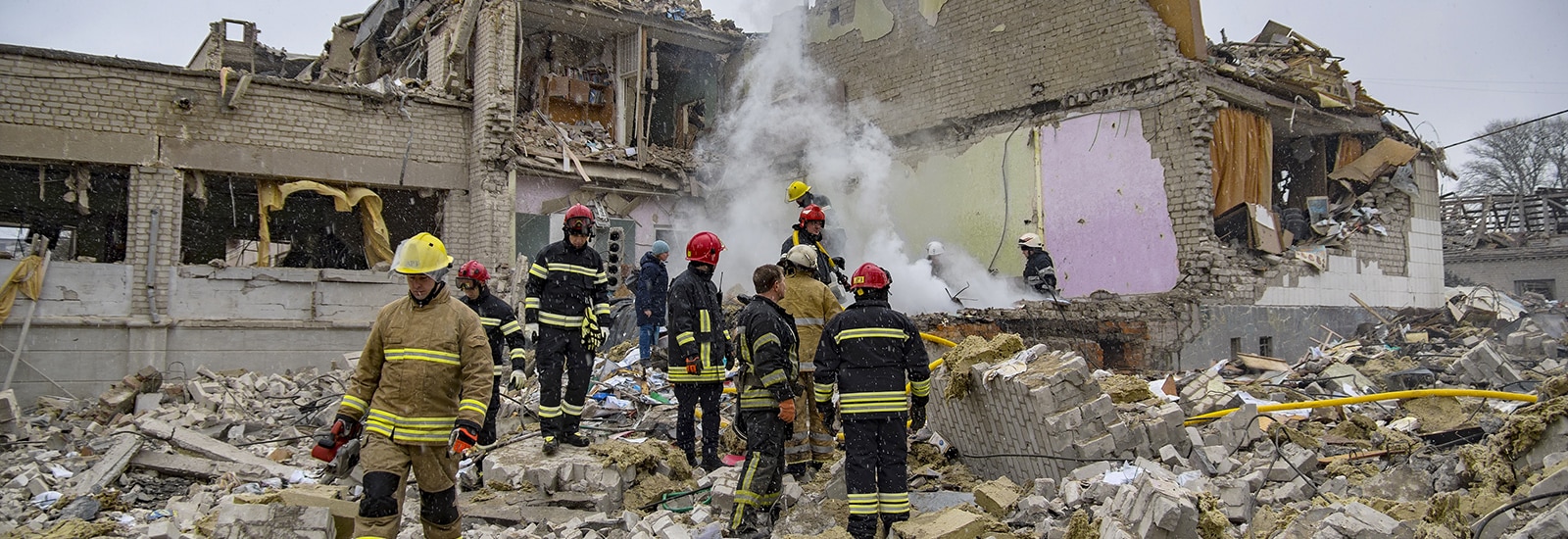Using social media activity to monitor and respond to population displacement in Ukraine
Wednesday 19th Apr 2023, 3.04pm

Whilst data from the United Nations High Commissioner for Refugees showed that 5.8 million people in Ukraine crossed the border to neighbouring countries in early May 2022, little was known about the movements of the 38 million people who remained.
This new study, published in the Population and Development Review, provides an innovative metric to monitor population displacement in Ukraine following Russia’s invasion. The metric combines daily United Nations data on how many people are crossing the Ukrainian border with the researchers’ daily data on active Facebook users to monitor population displacement across Ukraine provinces. The metric also takes into account the percentage of people who were active on Facebook before the invasion to mitigate any bias.
Lead author Dr Douglas Leasure from Oxford’s Leverhulme Centre for Demographic Science said: ‘Forced displacement of populations due to conflict is inherently difficult to measure as this often relies on traditional field survey methods which are difficult in conflict areas, with results becoming quickly outdated. By using social media and targeted advertising data, we were able to very quickly collect information on daily active users on Facebook in Ukraine provinces and break them down into five-year age groups and sex.’
The authors were able to estimate that 5.3 million people were internally displaced away from their home province between 25 February and 14 March 2022. Around the same time, the International Organization for Migration estimated a similar internal population displacement level of 6 million people.
Both these studies contributed to the United Nations revising their initial internal displacement estimate of 1.6 million people around three weeks after Russia’s invasion to 6.5 million as of 16 March 2022.
In just over three months since the start of Russia’s invasion, the study’s estimates suggest that over six million people had been internally displaced away from their home province. The study also quantified population increases in western Ukraine and large displacements, particularly among women and children, away from conflict areas such as Kyiv before and during the Ukraine Crisis.
Lead author Dr Douglas Leasure adds: ‘After reaching out to humanitarian groups who were ramping up their response to support displaced populations in Ukraine, it became really clear to us that our daily population estimates could help the United Nations and others to assess humanitarian needs and develop a targeted response strategy.’
Oxford’s Leverhulme Centre for Demographic Science continues to work with the United Nations, International Organization for Migration, and other humanitarian groups to assist in the distribution of humanitarian aid to specific locations and age groups who need it most.
Professor Melinda Mills, senior author of the study and Director of the Leverhulme Centre for Demographic Science, concludes: ‘I am very proud of my team and our collaborators who rapidly responded to the need for information on internal displacement in Ukraine to assist with the humanitarian response. This metric is one of the only quantitative estimates of internal displacement in virtual real-time, which we are continuing to develop to help those in need during humanitarian crises.’
Find out more about this study and how social media activity can be used to deliver humanitarian aid in this Oxford Sparks Big Questions podcast.
The study, ‘Nowcasting Daily Population Displacement in Ukraine through Social Media Advertising Data’, can be found here.

